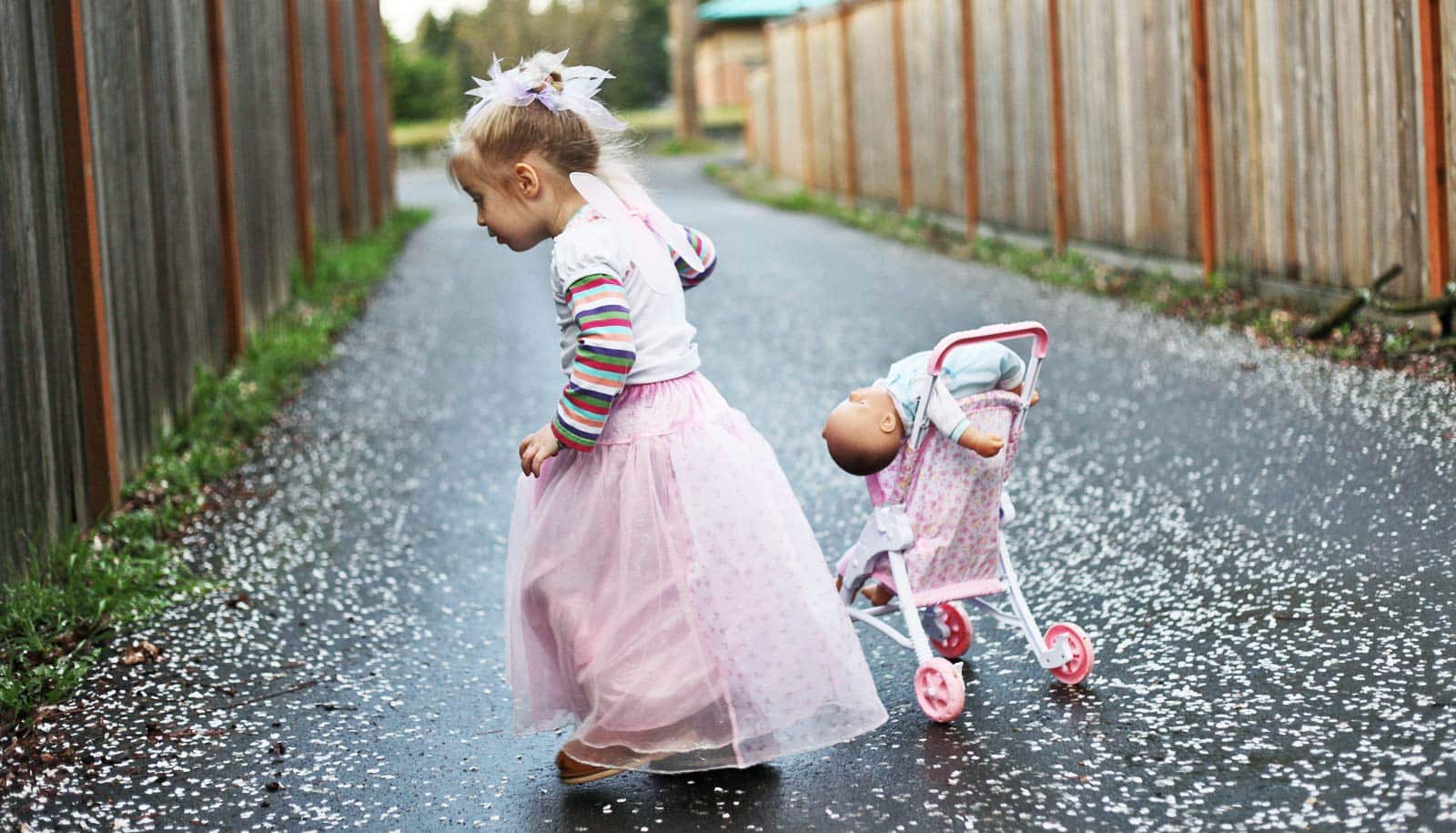Gender identity and gender-typed preferences manifest similarly in both cis- and transgender children, even those who recently transitioned, research finds.
Children who identify as the gender matching their sex at birth tend to gravitate toward the toys, clothing, and friendships stereotypically associated with that gender. Transgender children do the same with their gender, regardless of how long they have actually lived as a member of that gender.
These new findings come from the largest study of socially-transitioned transgender children in the world, which appears in the Proceedings of the National Academy of Sciences.
“We’re not seeing any increases or decreases over time in how strongly transgender children identify with their current gender.”
The study followed more than 300 transgender children from across the United States, as well as nearly 200 of their cisgender siblings and about 300 unrelated cisgender children as a control group. It is the first study to report on all of the participants in the TransYouth Project, which University of Washington psychology professor Kristina Olson launched in 2013.
The transgender children in this study, all of whom enrolled between the ages of 3 and 12, had socially—but not medically—transitioned when they participated: They had changed their pronouns and often their first names, as well as dress and play in ways associated with a gender other than their sex at birth.
For this study, researchers met individually with participants and their parents at participants’ homes, conferences, and camps. Participants were asked about specific aspects of life that are typically connected to gender—clothing, toys, and friends. The researchers also evaluated participants’ sense of their own gender identity.
‘Strong identities’
While the team observed some variability in how strong children’s preferences and identities were, the transgender children showed, on average, strong preferences and behaviors associated with their current gender, just as the cisgender children with whom they were compared.
“Trans kids are showing strong identities and preferences that are different from their assigned sex,” says lead author Selin Gülgöz, who did the work as a postdoctoral researcher at the University of Washington and will start a new position this winter as an assistant professor at Fordham University.
“There is almost no difference between these trans- and cisgender kids of the same gender identity—both in how, and the extent to which, they identify with their gender or express that gender.”
Transgender children and gender identity
In the study, this was evident in assessments of participants’ behavior. “While in both groups there were, for example, some tomboys, on average, most transgender girls, like their cisgender counterparts, wore stereotypically feminine clothing, chose toys such as dolls to play with, preferred playing with female playmates, and identified themselves clearly as girls, and not boys,” says Olson, the study’s senior author. “Thus the transgender group looked similar to the cisgender group in both the range of responses and the most common responses.”
Of the transgender and cisgender control group participants, about one-third were boys, and two-thirds were girls; the average age was eight. Among the cisgender siblings, the average age was also eight, with slightly more boys than girls.
The finding that transgender children’s gender identity was generally equivalent to that of cisgender children was based on analysis of the survey and behavioral data.
When asked to identify their gender, an equivalent percentage of cisgender and transgender children—83% and 84%, respectively—named their current gender. (Researchers note that among the youngest participants in all groups, this question often resulted in a less definitive answer like “I don’t know.”)
The similarities among transgender and cisgender children on the various measures were somewhat surprising, researchers say, because transgender children, unlike their cisgender counterparts, were early in life treated as a gender other than the one they currently identify as.
Early socialization
As part of the study, researchers asked parents for photos of their child from birth through toddlerhood at typical social events such as birthdays and holidays to capture information such as what the child wore or what their room looked like. These images helped show that transgender children were initially socialized among families and friends as the gender associated with their sex at birth.
However, years later there appears to be no impact of that early sex-specific socialization. These results suggest that, years later, the impact of this early sex-specific socialization is not apparent on these measures of children’s gender preferences and identities.
This suggests that transgender children may be self-socializing to learn how to “be” their current gender, Gülgöz says.
“Kids aren’t passive about their environment. Once they have a sense of their gender identity, they will look for cues from their environment, noticing what society’s expectations are, and attending to information about the gender they identify as,” Gülgöz says.
How—and for how long—a transgender child was treated as their assigned sex does not appear to affect their current gender identity and expression, Gülgöz says.
“We’re not seeing any increases or decreases over time in how strongly transgender children identify with their current gender,” Gülgöz says.
This study did not include children who use nonbinary pronouns like “they” or who came out as transgender later in life. Further, all members of the study had at least some family support of their transgender identity. Whether the present findings would extend to these other groups of participants is currently unknown, Olson cautions.
This study adds to findings from previous research, which showed that transgender children’s sense of gender identity was consistent, whether tested before or after they transitioned socially.
“Our data thus far suggest that the act of transitioning probably isn’t affecting gender identity one way or the other,” Olson says.
Funding for the study came from the National Science Foundation, the National Institute of Child Health and Human Development, and the Arcus Foundation.
Coauthors are from the University of Washington, Western Washington University, and Arizona State University.
Source: University of Washington


